Fish Cooking
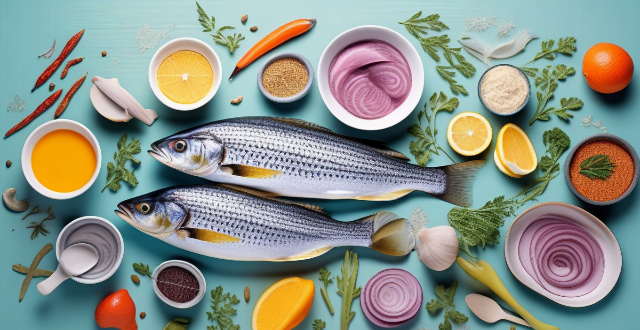
What are the best techniques for cooking seafood ?
The article provides a summary of the best techniques for cooking seafood, which include poaching, grilling, steaming, and baking. Poaching is a gentle method of cooking seafood in a flavorful liquid such as water, broth or wine. Grilling is ideal for firm-fleshed fish like salmon or swordfish and adds flavor and texture to seafood. Steaming is a healthy way to cook seafood without adding extra fat and works well for fish fillets or shellfish like clams or mussels. Baking is a dry heat method that works well for thicker cuts of fish like cod or haddock. The article emphasizes the importance of paying attention to timing and temperature to avoid overcooking seafood.
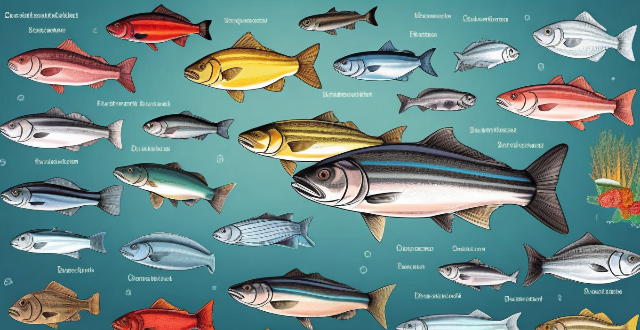
What are some tips for pan-searing a fillet of fish ?
The article provides a comprehensive guide on how to pan-sear a fillet of fish. It emphasizes the importance of choosing the right type of fish, seasoning it well, using the right cooking equipment, and following specific steps for optimal results. The tips include dry-seasoning the fish, adding enough oil to the pan, flipping the fish carefully, and allowing it to rest before serving.

How do I prepare a perfect grilled fish ?
Grilling fish is a delightful culinary experience that can be perfected with the right preparation and process. Here's a step-by-step guide to help you achieve perfection every time you fire up the grill for your favorite fish: 1. **Preparation** - **Choosing the Right Fish**: Opt for fresh fish, aim for fillets that are at least 1-inch thick, and choose types of fish like salmon, sea bass, and swordfish that are great for grilling due to their natural fat content. - **Marination**: Decide on the flavor profile you want, marinate the fish for at least 30 minutes to an hour in the refrigerator, but be cautious not to leave it too long as the acid in the marinade can start to cook the fish. - **Grill Prep**: Ensure your grill is clean to avoid any unwanted flavors and lightly oil the grates to prevent sticking. 2. **Grilling Process** - **Preheating the Grill**: Preheat the grill to medium-high heat, ideal temperature range between 375°F to 450°F (190°C to 230°C). - **Cooking the Fish**: Place the fish skin side down on the grill, flip the fish only once, and use a wide spatula to carefully flip and remove the fish without breaking it. - **Checking for Doneness**: The flesh should turn from translucent to opaque and give a gentle poke; it should flake easily with a fork. 3. **Serving Suggestions** - **Lemon Wedges**: Serve with wedges of lemon to add a fresh citrus note. - **Herb Sauce**: Pair with a simple herb sauce or compound butter. - **Side Dishes**: Consider serving with grilled vegetables, a fresh salad, or roasted potatoes. By following these steps, you will be able to prepare a perfect grilled fish that is sure to impress your guests or simply satisfy your own cravings for a delicious meal. Enjoy the process and savor the flavor!

What are the basic techniques used in Chinese cooking ?
Chinese cuisine is known for its diverse flavors and cooking techniques. Here are some of the basic techniques used in Chinese cooking: 1. Stir-frying involves quickly frying small pieces of food in a wok or frying pan over high heat. The key to successful stir-frying is to use hot oil, fresh ingredients, and constant motion to prevent burning. 2. Steaming involves placing food in a steamer basket over boiling water and allowing it to cook through steam. This method is often used for dumplings, buns, fish, and vegetables. 3. Braising is a slow-cooking method that involves simmering meat or vegetables in liquid until they become tender and flavorful. This technique is often used for stews, soups, and braises. 4. Deep-frying involves submerging food in hot oil until it becomes crispy and golden brown. This technique is often used for fried rice, spring rolls, and tempura dishes. 5. Roasting involves cooking food in an oven at high temperatures until it becomes caramelized and tender. This technique is often used for roasted meats, vegetables, and baked goods like mooncakes and egg tarts.
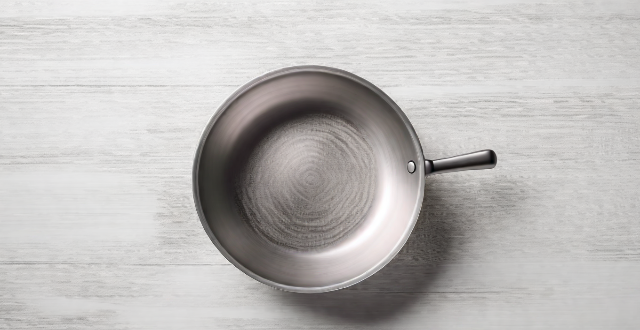
Can you explain the different types of cooking pans and their uses ?
The text provides a detailed overview of different types of cooking pans, highlighting their specific uses and features. It covers non-stick pans, cast iron pans, stainless steel pans, copper pans, aluminum pans, grill pans, skillets, saucepans, and griddle pans. Each type of pan is described in terms of its ideal uses and unique characteristics, such as heat conductivity, maintenance requirements, and compatibility with various cooking methods and materials. The summary emphasizes the importance of using the right pan for a given task to achieve optimal cooking results.

How can I reduce the amount of cleaning required after cooking a meal ?
Cleaning up after cooking can often feel like a chore, especially after spending time preparing a delicious meal. However, there are several strategies you can implement to minimize the mess and make cleaning up quicker and easier. Here's a detailed guide on how to reduce the amount of cleaning required after cooking: Before You Start Cooking - Plan Ahead: Decide what you will cook and read through the recipe completely. This helps you prepare all necessary ingredients and tools beforehand, reducing the need to clean up multiple times during cooking. Prep Your Workspace: Clear your countertops and clean them thoroughly before you start cooking. A clean work area means less mess to clean up later. Use Non-stick Cookware: Non-stick pans and bakeware require less oil or butter, making them easier to clean with just a quick wipe down. Set Up a Spill Station: Place a sheet of foil under or beside the stove to catch drips and spills, which can be easily thrown away after cooking. While You Are Cooking - Clean as You Go: Wash utensils and dishes immediately after using them. This prevents food residue from drying up and becoming harder to clean. Use Covers on Pots and Pans: This reduces splatters and saves you from having to wipe down the stove and surrounding surfaces. Contain Small Messes: Use a small bowl to hold waste like vegetable peels or fish bones rather than letting them spread over the counter. After You Have Cooked - Soak Dishes: If you have dishes that are difficult to clean, fill them with hot water and a little detergent to soak while you eat. This makes them much easier to clean later. Wipe Down Appliances: Give your appliances like blenders, mixers, or food processors a quick wipe down after use to remove any splatters. Clean the Stove Top and Countertops: Wipe these areas down with a damp cloth after cooking to avoid crusty buildup. General Tips for Efficiency - Simplify Your Recipes: Opting for simpler recipes can reduce the number of dishes used and ingredients prepared. Cook One-Pot Meals: One-pot meals like stews, casseroles, or stir-fries require fewer dishes to wash. Use Disposable Items Wisely: While not environmentally friendly, disposable items like baking paper, foil, or paper plates can be used strategically in situations where cleanup is particularly challenging.

What are some ways to organize my kitchen to make cooking more efficient ?
Organizing your kitchen can greatly enhance the cooking experience by making it more efficient and enjoyable. Here are some strategies to consider: 1. Zone Cooking Areas 2. Declutter Regularly 3. Smart Storage Solutions 4. Group Like Items Together 5. Maximize Fridge and Freezer Space 6. Keep a Clean Sink 7. Lighting and Safety
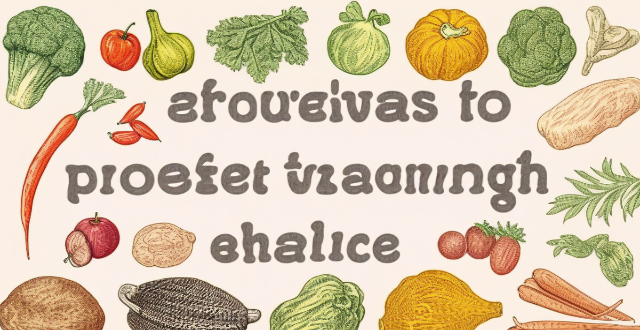
How can I streamline my cooking process to save time in the kitchen ?
The text provides tips and tricks for streamlining the cooking process, including planning ahead, using slow cookers or pressure cookers, prepping ingredients in advance, cooking once and eating multiple times, and cleaning as you go. These strategies aim to save time, reduce stress, promote healthy eating, and create a more enjoyable cooking experience by emphasizing preparation and organization.

What kind of seasonings work well with different types of fish ?
This text provides a comprehensive guide to seasonings for various types of fish and shellfish, categorized by freshwater and saltwater species. It offers specific seasoning suggestions for each type of fish or shellfish, such as salmon, trout, catfish, tuna, mahi-mahi, sardines, anchovies, shrimp, lobster, crab, clams, mussels, and oysters. The suggested seasonings aim to enhance the natural flavors of the seafood while adding depth and complexity to the dishes.
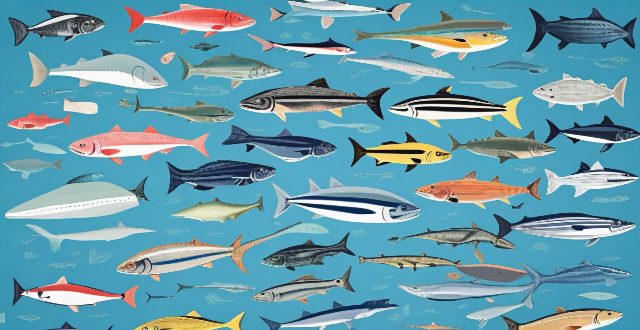
How do changing ocean temperatures influence fish migration patterns ?
This article explores how changing ocean temperatures influence fish migration patterns, affecting fish populations and the fishing industry. Water temperature plays a crucial role in fish metabolism, growth rates, reproduction, and survival, making it essential to understand its impact on migration patterns. Changing ocean temperatures can alter habitat conditions, food availability, cause physiological stress, and affect reproduction, leading to decreased abundance, shifting fishing grounds, economic losses, and ecosystem disruption. Monitoring ocean temperatures and adapting fishing practices are crucial for managing fish populations sustainably and mitigating the negative impacts of climate change on marine ecosystems.

Is it safe to eat raw fish like sushi and ceviche at home ?
The text delves into the safety concerns of consuming raw fish at home, highlighting potential risks such as foodborne illnesses and toxin exposure. It then provides guidelines on selecting, handling, and preparing raw fish to minimize these risks. Despite these precautions, it emphasizes that complete risk elimination is impossible and advises enjoying raw fish responsibly.

What are some creative ways to use tofu in vegetarian cooking ?
Tofu is a versatile and nutritious ingredient that can be used in a variety of vegetarian dishes. Here are some creative ways to use tofu in your cooking: marinated and grilled tofu skewers, creamy tofu pasta sauce, tofu stir-fry, tofu bao buns, tofu scramble, and tofu dumplings. By incorporating these ideas into your vegetarian cooking, you can enjoy the many health benefits of tofu while exploring new flavors and textures in your meals.

Can you explain the concept of umami in Japanese cooking ?
Umami is one of the five basic tastes, along with sweet, sour, salty, and bitter. It is often described as a savory or meaty taste, and is commonly found in foods such as mushrooms, soy sauce, and aged cheeses. In Japanese cooking, umami is considered an essential flavor profile that adds depth and complexity to dishes. The science of umami is caused by the presence of glutamate, a type of amino acid, in food. When we eat foods that contain glutamate, it stimulates our taste buds and sends signals to our brain that register as a distinct taste. This taste is often associated with protein-rich foods like meat, fish, and vegetables. In Japanese cuisine, umami is used to enhance the flavors of dishes and create a more complex taste profile. Some common ingredients that are high in umami include miso (fermented soybean paste), dashi (Japanese broth made from dried fish and seaweed), soy sauce, dried shiitake mushrooms, and kombu (a type of seaweed). Umami is used in a variety of ways in Japanese cooking. For example, miso soup is made by mixing miso paste with dashi broth to create a savory soup that is often served as part of a traditional Japanese breakfast. Sushi combines vinegared rice, fresh fish, and soy sauce to create a perfect balance of flavors that includes umami. Ramen noodles use a broth made with chicken or pork bones, which are rich in umami. Teppanyaki involves grilling meat and vegetables on a hot plate, which helps to release their natural umami flavors. In conclusion, umami is an important flavor profile in Japanese cooking that adds depth and complexity to dishes. By using ingredients that are high in glutamate, chefs can create dishes that are both delicious and satisfying.
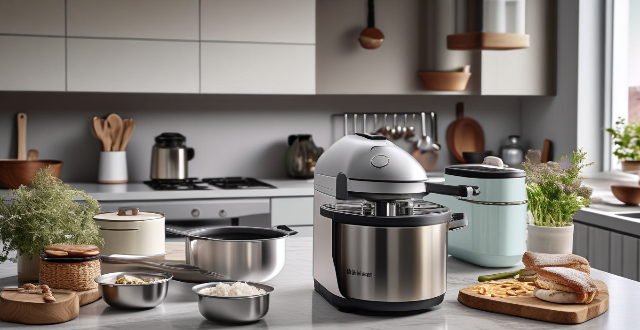
How can I use kitchen appliances to save time while cooking ?
Using kitchen appliances like food processors, slow cookUsing kitchen appliances like food processors, slow cookers, rice cookers, slow cookers, electric pressure cookers, rice cookers, and stand mixers can significantly save time in meal preparation. These appliances offer features such as chopping, grinding, making dough, cooking at different heat settings, and precise mixing, allowing for efficient and convenient cooking experiences.

How does proper cooking and baking contribute to food safety ?
Food safety is crucial for maintaining public health and preventing illnesses. Proper cooking and baking are vital components of food safety, as they can destroy harmful microorganisms that may contaminate raw ingredients. High temperatures during cooking and baking kill most bacteria, reduce viruses, and eliminate parasites. Additionally, proper cooking practices prevent cross-contamination by using separate utensils and cutting boards for different types of food. To ensure food safety during cooking and baking, it's essential to use a food thermometer to check the internal temperature of cooked foods, follow recipes and time guides, keep work surfaces and equipment clean, store raw and cooked foods separately, avoid overcrowding pans, and refrigerate leftovers promptly. By adopting these best practices, you can significantly minimize the risk of foodborne illnesses and enjoy safe, delicious meals.

What are the most common mistakes when cooking lobster at home ?
Cooking lobster at home can be delightful but common mistakes can affect taste and texture. Here are the most frequent errors: 1. **Not Preparing the Lobster Properly** - Underestimating the amount of salt needed for cooking water. - Ignoring the rinse before cooking to remove sand or grit. 2. **Overcooking the Lobster** - Cooking too long results in tough and chewy lobster. - Lack of temperature control during cooking. 3. **Choosing the Wrong Lobster** - Selecting poor quality or lethargic lobsters. - Neglecting size variation leading to uneven cooking times. 4. **Disregarding Safety Precautions** - Handling live lobsters incorrectly, risking injury. - Ignoring cross-contamination with other foods. 5. **Inadequate Flavoring** - Skipping seasoning, missing out on enhancing natural sweetness. - Overlooking garnishes that can improve the dining experience. 6. **Improper Storage and Handling** - Storing improperly if not cooked immediately. - Delaying cooking after purchase, risking the quality of the lobster. By avoiding these mistakes, you can ensure that your homemade lobster dishes are delicious and succulent.

How is ocean acidification due to carbon dioxide absorption affecting the health of fish stocks ?
**Ocean Acidification and Its Impact on Fish Stocks** The absorption of carbon dioxide (CO2) from the atmosphere into the ocean causes ocean acidification, leading to a decrease in pH levels and increased acidity. This phenomenon poses significant threats to marine life, particularly fish stocks, through various effects: 1. **Changes in Calcium Carbonate Availability:** As the ocean becomes more acidic, there is less calcium carbonate available for shell formation in many fish species, affecting their growth and survival, especially during early developmental stages. 2. **Altered Food Web Dynamics:** Acidification can cause changes in plankton communities, disrupting the food chain and affecting predator-prey relationships, potentially leading to overpredation or starvation among certain fish species. 3. **Behavioral Changes:** Increased acidity can interfere with sensory systems in fish, affecting their ability to find food, avoid predators, and navigate. It may also alter reproductive behavior, leading to reduced breeding success. 4. **Energy Allocation:** Acidification increases metabolic costs associated with maintaining physiological functions, reducing resources available for growth, reproduction, and other essential processes. It can also weaken the immune system, making fish more susceptible to diseases and parasites. Understanding these effects is crucial for developing strategies to mitigate the impacts of ocean acidification and protect marine ecosystems.
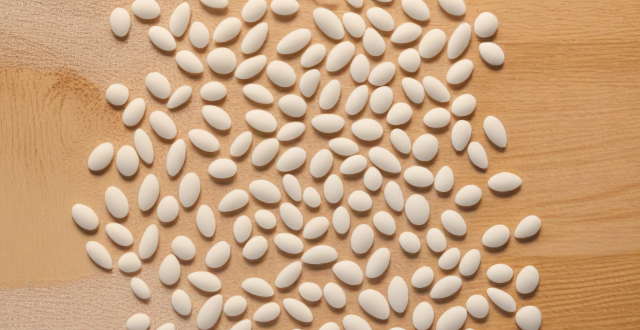
How do I choose the right type of rice for Chinese cooking ?
When it comes to Chinese cooking, selecting the rightWhen it comes to Chinese cooking, selecting the right for achieving the desired texture and selecting the right type of rice is crucial for achieving the desired texture and flavor in your dishes. Consider the dish you are making, look for quality and freshness when purchasing rice, and don't forget to consider your personal preferences. By following these steps, you can choose the perfect type of rice for your Chinese cooking needs.

How can I incorporate more whole foods into my home cooking ?
The provided text offers a comprehensive guide on how to incorporate more whole foods into one's home cooking routine. Here is a summary of the key points: 1. **Plan Your Meals Around Whole Foods:** Engage in weekly menu planning, focusing on meals that include whole food ingredients, and make a shopping list based on this plan to avoid processed items. 2. **Start with Whole Grains:** Swap refined grains like white rice and pasta with whole grain versions such as brown rice and whole wheat pasta. Experiment with different whole grains like quinoa and barley for added variety. 3. **Include More Fruits and Vegetables:** Aim for a diverse range of fruits and vegetables to get a wide spectrum of nutrients. Prep them at the start of the week for easy access. 4. **Choose Lean Proteins:** Opt for skinless poultry and fish over red meats. Incorporate plant-based proteins like legumes, nuts, and seeds. 5. **Use Healthy Fats:** Cook with olive oil or avocado oil instead of butter or margarine. Add nuts and seeds to dishes for a healthy fat boost. 6. **Limit Processed Foods:** Be mindful of food labels and avoid products with numerous unrecognizable ingredients. Make your own snacks using whole food ingredients. 7. **Get Creative with Spices and Herbs:** Use these natural flavor enhancers instead of salt or high-sodium seasonings. Consider growing your own herbs for fresh flavors year-round. 8. **Cook from Scratch When You Can:** Make homemade stocks, sauces, and dressings instead of buying pre-made versions. Batch cook whole food meals and freeze leftovers for quick meals later. 9. **Embrace Fermented Foods:** Include probiotic-rich foods like kimchi and sauerkraut for gut health benefits. 10. **Keep Learning and Adapting:** Continuously educate yourself about whole foods and their nutritional benefits. Stay open to trying new whole foods to keep meals exciting and varied. By following these steps, individuals can successfully integrate more whole foods into their home cooking, leading to a healthier lifestyle for themselves and their families.
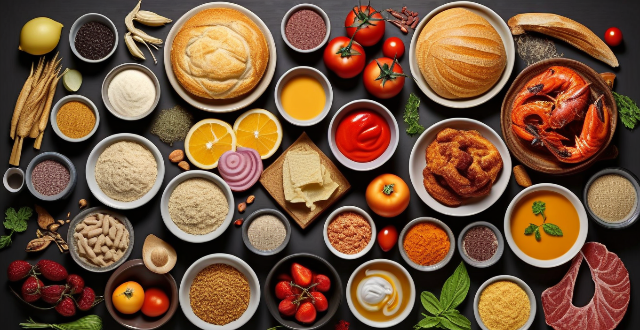
How does Chinese cuisine differ from other Asian cuisines ?
Chinese cuisine is one of the most diverse and influential cuisines in the world, with a history that spans thousands of years. While there are many similarities between Chinese cuisine and other Asian cuisines, there are also several key differences that set it apart. These differences include the use of ingredients, cooking techniques, flavor profiles, and regional variations within each cuisine. Chinese cuisine often uses a wider variety of ingredients than other Asian cuisines, including both meat and vegetables. Additionally, Chinese cuisine often incorporates more spices and herbs into its dishes than other Asian cuisines. Another difference is the cooking techniques used. Chinese cuisine often involves stir-frying or steaming foods, while other Asian cuisines may rely more heavily on grilling or baking. Chinese cuisine also tends to use woks for cooking, which allows for high heat and quick cooking times. In terms of flavor profiles, Chinese cuisine has a distinct flavor profile that sets it apart from other Asian cuisines. Chinese cuisine often features bold flavors such as garlic, ginger, soy sauce, and chili peppers. In contrast, Japanese cuisine may have a lighter, more delicate flavor profile that emphasizes umami (savory) flavors. Thai cuisine, on the other hand, may be spicier and more aromatic than Chinese cuisine. Finally, another difference between Chinese cuisine and other Asian cuisines is the regional variations within each cuisine. China has a vast geographic area with many different regions, each with its own unique culinary traditions. Similarly, Japanese cuisine can vary greatly depending on whether it comes from the northern or southern regions of Japan.

How do I make sushi at home ?
Sushi is a popular Japanese dish that has gained worldwide popularity for its delicious taste and health benefits. Making sushi at home can be a fun and rewarding experience. Here are the steps to follow: Ingredients: - Sushi rice - Nori sheets - Fish fillets (salmon, tuna, or any other fish of your choice) - Vegetables (cucumber, avocado, carrots) - Soy sauce - Wasabi - Pickled ginger Tools: - Bamboo sushi mat - Rice cooker or pot - Sharp knife Steps: 1. Cook the sushi rice by rinsing it in cold water until the water runs clear, then cooking it with water in a pot until all the water has been absorbed. Mix the cooked rice with sushi vinegar using a wooden spoon. 2. Prepare the fish and vegetables by cutting them into thin slices and long, thin strips respectively. 3. Assemble the sushi rolls by placing a sheet of nori on top of the bamboo sushi mat, spreading a small handful of sushi rice evenly over the nori sheet leaving about an inch gap at the top, arranging the fish and vegetable slices on top of the rice, and rolling the sushi tightly using the bamboo mat. Wet the gap at the top of the nori sheet with water to seal the roll. 4. Cut the sushi rolls into bite-sized pieces using a sharp knife, wiping the knife with a damp cloth between each cut to prevent sticking. 5. Serve the sushi by arranging the pieces on a plate and serving with soy sauce, wasabi, and pickled ginger. Enjoy your homemade sushi!
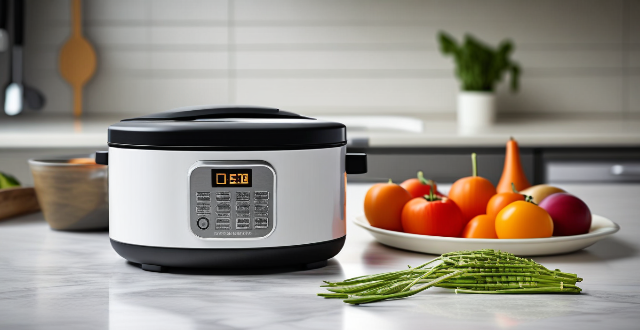
What are some must-have kitchen gadgets for healthy eating ?
In pursuit of healthy eating, having the right kitchen gadgets can significantly improve the preparation and enjoyment of nutritious meals. This article lists essential tools such as a high-quality chef's knife for efficient chopping, a food processor for versatile cooking tasks, a steamer basket for nutrient-rich cooking, and other devices like slow cookers, spiralizers, and immersion blenders that facilitate healthy meal preparation. Each device is discussed in terms of its benefits, uses, and why it is considered essential for healthy cooking. By incorporating these tools into your kitchen setup, you can make preparing healthy meals easier and more enjoyable, setting the foundation for a lifetime of healthy eating habits.

What role do climate models play in predicting future fishery yields ?
Climate models are essential for predicting future fishery yields by analyzing ocean conditions, projecting changes in fish population dynamics, and evaluating potential impacts on management strategies. They help identify shifts in habitats, migration patterns, growth rates, recruitment success, mortality rates, fishing quotas, spatial management needs, and diversification opportunities. This knowledge aids in developing resilient and adaptive approaches to ensure the long-term sustainability of fisheries resources amidst climate change.